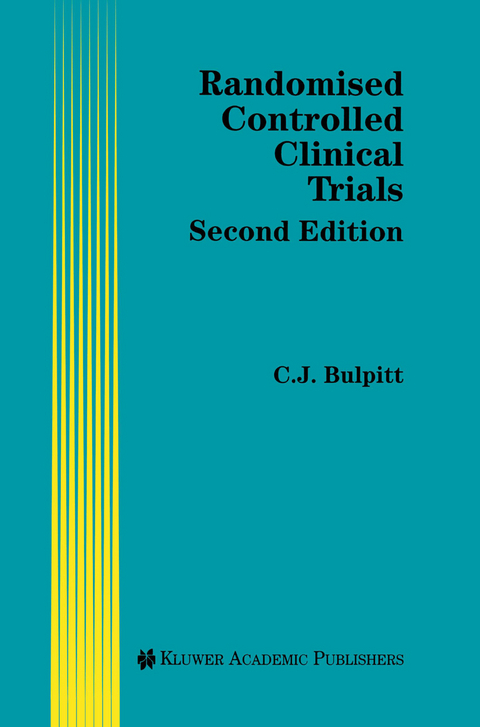
Randomised Controlled Clinical Trials
Springer-Verlag New York Inc.
978-1-4613-7915-7 (ISBN)
After 13 years there are new areas to discuss and more recent trials to be included. Good clinical practice; evaluation of quality of life; measurement of the benefit:risk comparison; determination of cost- effectiveness and cost utility; stopping rules for trials; meta-analysis and subgroup analysis are all new sections. The references are expanded from 305 to 512 and include the recent advances in trial design, such as the n-of-1 trials and megatrials, and up-to-date examples to illustrate the points made in the 20 chapters.
1. Introduction.- 2. The history of controlled trials.- 3. Ethical considerations.- 4. The objectives of a randomised controlled trial.- 5. Different trial designs.- 6. How many subjects are required for a trial?.- 7. How to ensure that the results are free of bias.- 8. Writing the protocol.- 9. Recruitment of subjects.- 10. Information to be collected during a trial.- 11. The conduct of the trial — Good Clinical Practice.- 12. Stopping rules for trials.- 13. The variability and validity of results.- 14. Analysis of the results, subgroup and meta-analysis.- 15. The evaluation of subjective well-being and measurement of quality of life.- 16. The detection of adverse drug reactions.- 17. Measurement of the benefit; risk comparison, cost-effectiveness and cost-utility.- 18. Early trials on new drugs.- 19. Failure to accept the results of randomised controlled trials.- 20. The advantages and disadvantages of randomised controlled trials.- References.
| Zusatzinfo | IX, 437 p. |
|---|---|
| Verlagsort | New York, NY |
| Sprache | englisch |
| Maße | 155 x 235 mm |
| Themenwelt | Sachbuch/Ratgeber ► Gesundheit / Leben / Psychologie |
| Medizin / Pharmazie ► Gesundheitswesen | |
| Medizin / Pharmazie ► Pharmazie | |
| Medizin / Pharmazie ► Studium | |
| Naturwissenschaften ► Biologie ► Biochemie | |
| Naturwissenschaften ► Chemie ► Organische Chemie | |
| Naturwissenschaften ► Chemie ► Physikalische Chemie | |
| Recht / Steuern ► EU / Internationales Recht | |
| Recht / Steuern ► Privatrecht / Bürgerliches Recht ► Medizinrecht | |
| Technik ► Medizintechnik | |
| ISBN-10 | 1-4613-7915-6 / 1461379156 |
| ISBN-13 | 978-1-4613-7915-7 / 9781461379157 |
| Zustand | Neuware |
| Haben Sie eine Frage zum Produkt? |
aus dem Bereich


